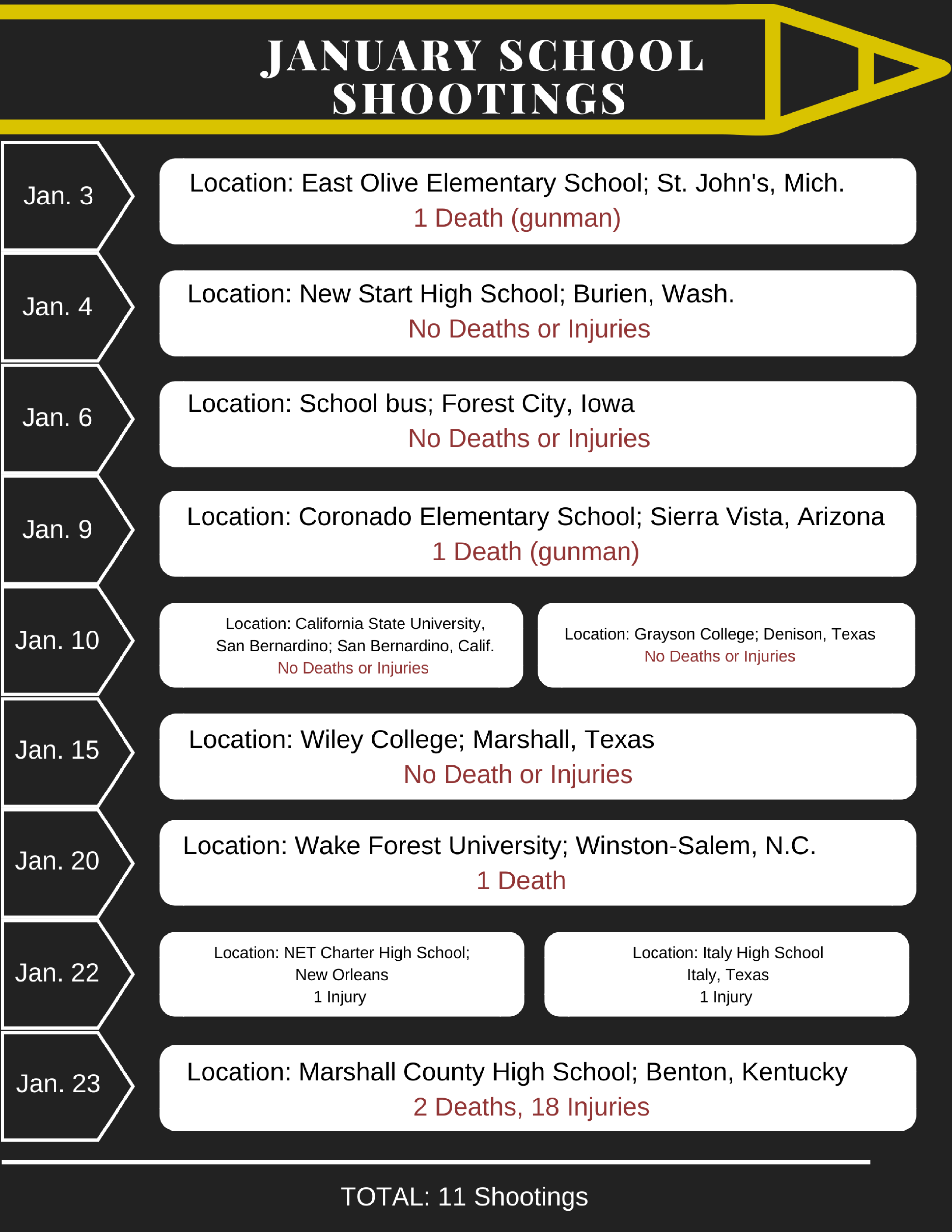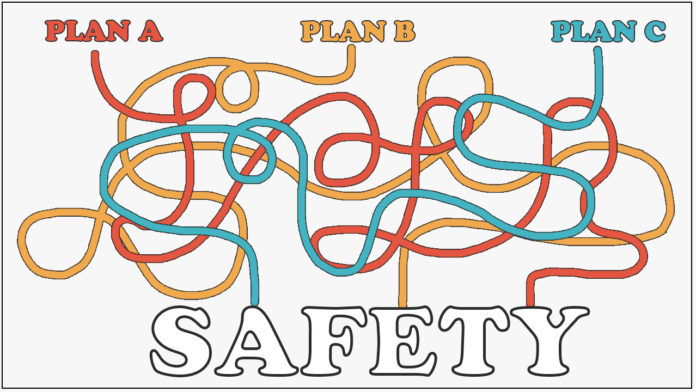There have been 11 school shootings in the United States this year. It isn’t even February yet.
The most recent and damaging of these occurred Jan. 23 at a small-town Kentucky high school, claiming the lives of two 15-year old students and injuring 18 other people.
In fact, researchers claim that since 2013, school shootings occur at a rate of about one a week. An F.B.I. study of active shooting incidents in the United States found that nearly 25 percent of those recorded took place in educational environments, and that number is increasing.
In some ways, these jarring numbers have stopped shocking us. While it would be an overstatement to call school shootings commonplace, they have undeniably lost some of their ability to halt news cycles and prompt moral action.
On Dec. 14, 2012, the nation watched news reports in horror as we struggled to digest the inconceivable reality before us –– 20 first graders and 6 adults had been killed as a result of a school shooting in Sandy Hook, Conn. These innoncent children –– lovers of dancing and soccer, pink and blue, bicycle riding and playing tag –– were killed just 11 days before Christmas.
And this is exactly how we need to think of these children: as children with hobbies and parents and friends and Christmas wish lists. Holocaust survivor and writer Elie Wiesel explains best, “The opposite of love is not hate, it is indifference.”
Of course, we can all agree that these school shootings are tragic. We could even come to a consensus that 11 shootings in one month is a startlingly high number. But the conversation can’t end there. Fear and empathy can only be a starting point for change.
While there is not one infallible method to keeping students and staff safe in the case of an active shooter, there are safeguard methods institutions can take.

The Government Accountability Office released a report in March 2016 which showed 19 states requiring schools to have plans for such circumstances. These key steps can range from hiring on-campus police to staging active-shooter drills to redesigning safety measures for effectiveness.
Since the Sandy Hook shooting, in particular, schools have begun installing buzzers, security cameras, bulletproof glass, metal detectors and other security reinforcements to protect those on campus. Sandy Hook Elementary School was completely rebuilt in the aftermath of the 2012 tragedy and reopened for the 2016-2017 school year. Besides being designed to feel inviting and nurturing, the school buildings also include security cameras, secure door bullet-proof glass and other confidential safety measures, Joseph Erardi, superintendent of schools told CNN.
These types of safety measures may not be feasible for some schools since buzzer systems alone can cost around $5,000, Dr. Amy Klinger, director of programs and co-founder of the Educator’s School Safety Network, a nonprofit that supports safer schools, told NBC.
Research shows that other methods like lockdown drills can contribute to the preparedness and safety of schools. Communication between administration, faculty and local law enforcement is key.
Individual schools have options when it comes to ensuring the protection of its students and staff. Some are pricier than others, some more effective than the rest. It shouldn’t take government legislation to force schools to recognize the importance of preparing for an active shooter emergency.
For those of us that no longer attend school or send children to school each morning, acknowledging these events and recognizing victims of school shootings for what they are: children with hopes and dreams is only the first step. We must encourage institutional change in our local schools to ensure that the future leaders of this nation not only are safe, but feel safe as well. Indifference does us no good. Love and action is the only way to incite positive, lasting change.






